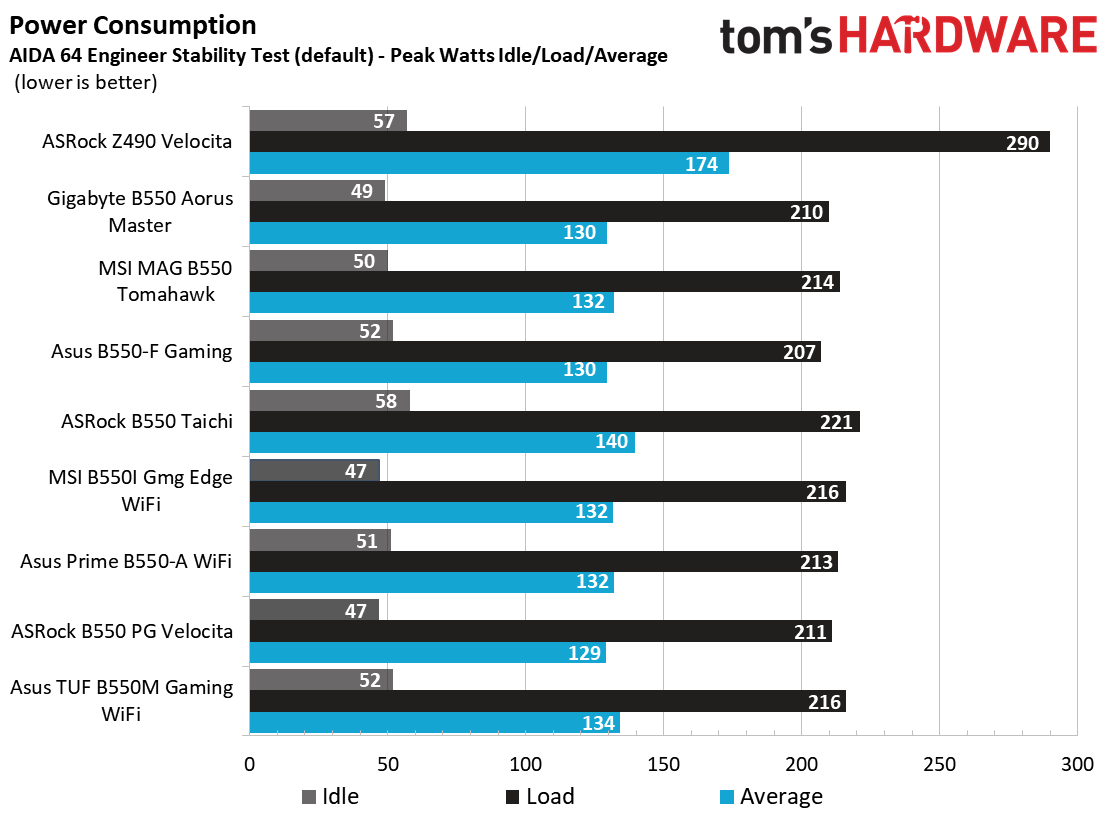Why you can trust Tom's Hardware
Our standard benchmarks and power tests are performed using the CPU’s stock frequencies (including stock Thermal Velocity Boost), with all power-saving features enabled. Optimized defaults are set in the BIOS and the memory is set using the XMP profiles. For this baseline testing, Windows is set to High Performance, before we switch over to Balanced during power testing, so the PC idles properly.
Synthetic Benchmarks
Synthetics are a great tool to figure out if a board is running out of spec, as identical settings should produce similar performance results. Advanced memory timings are the one place where motherboard makers can still optimize for either stability or performance, though, and those settings can impact some testing.

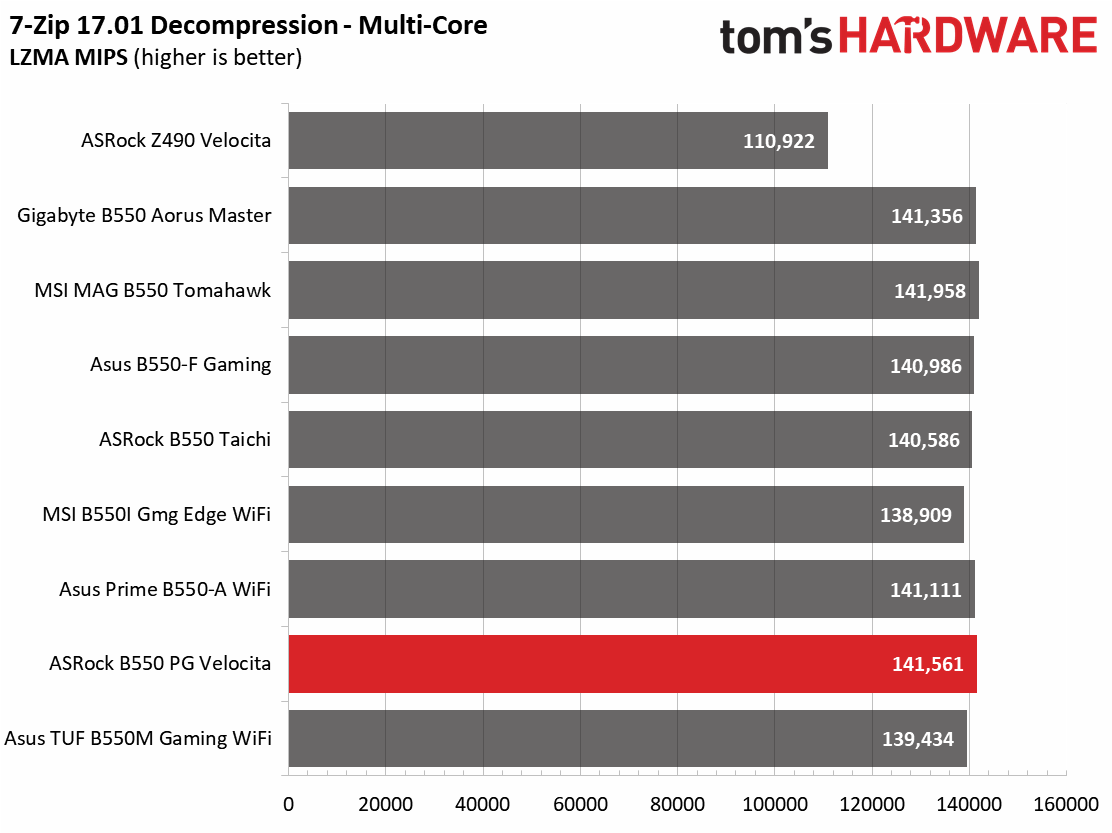

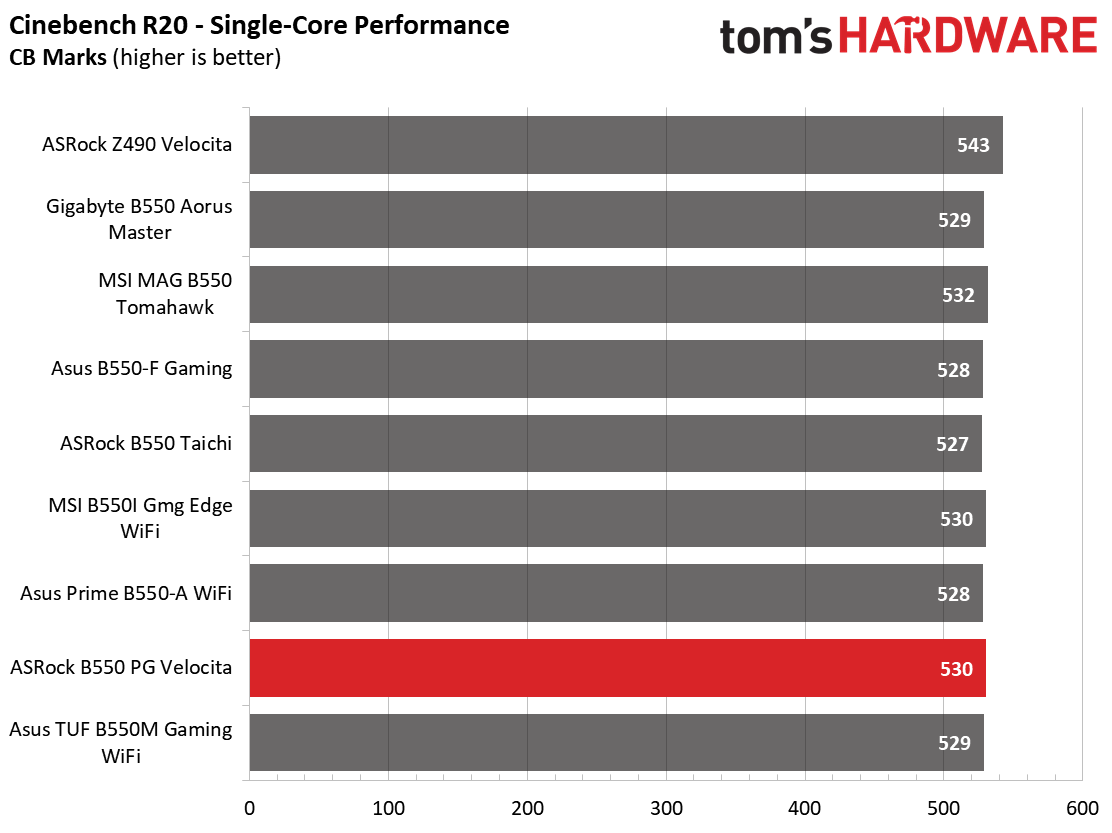

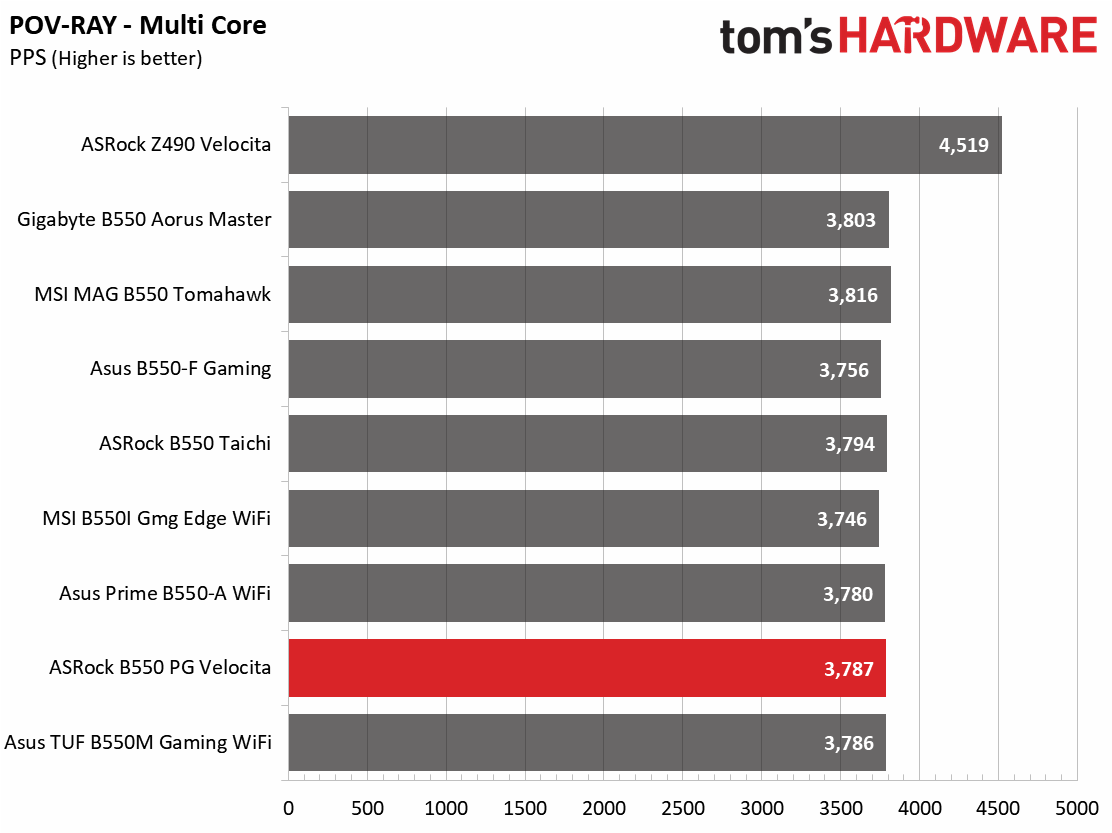
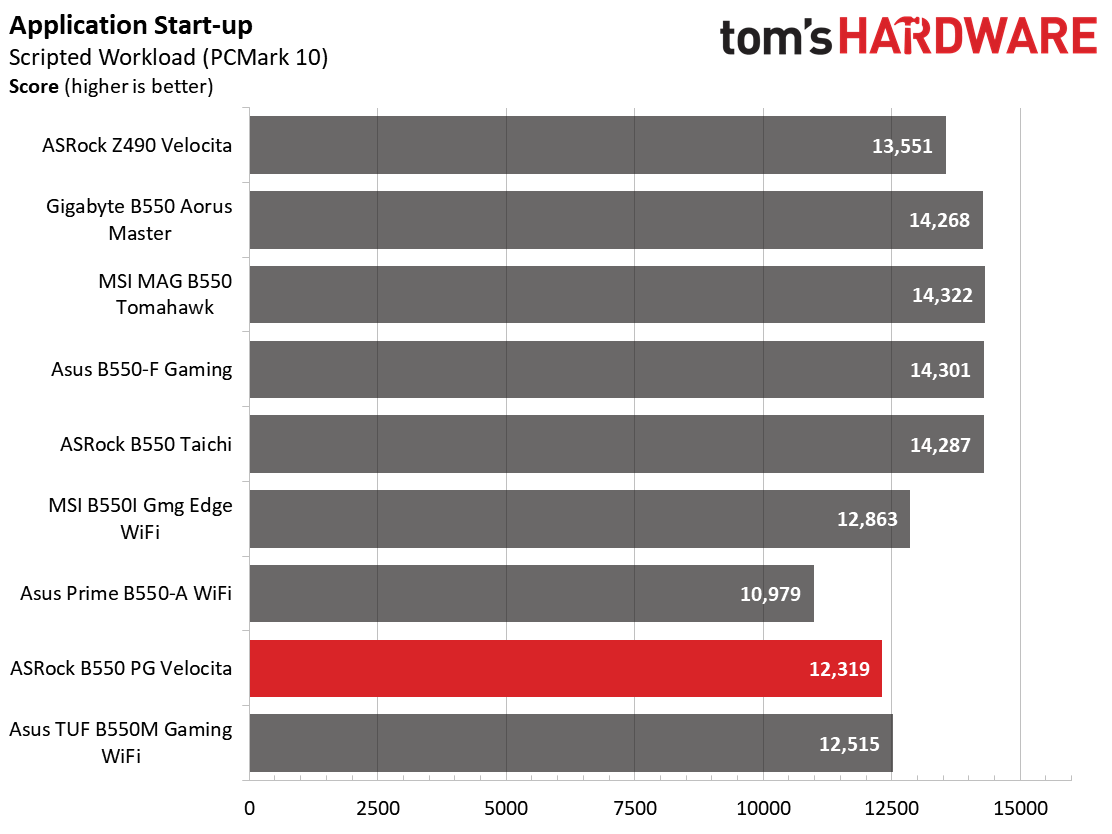
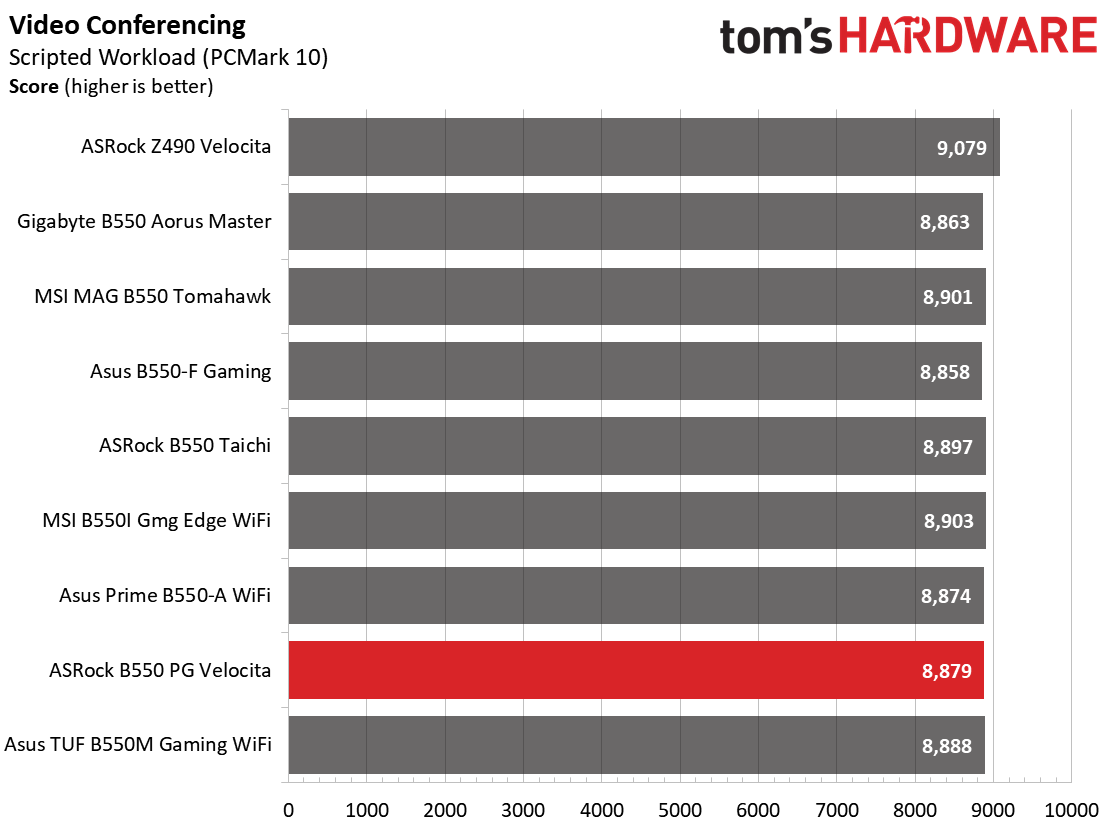
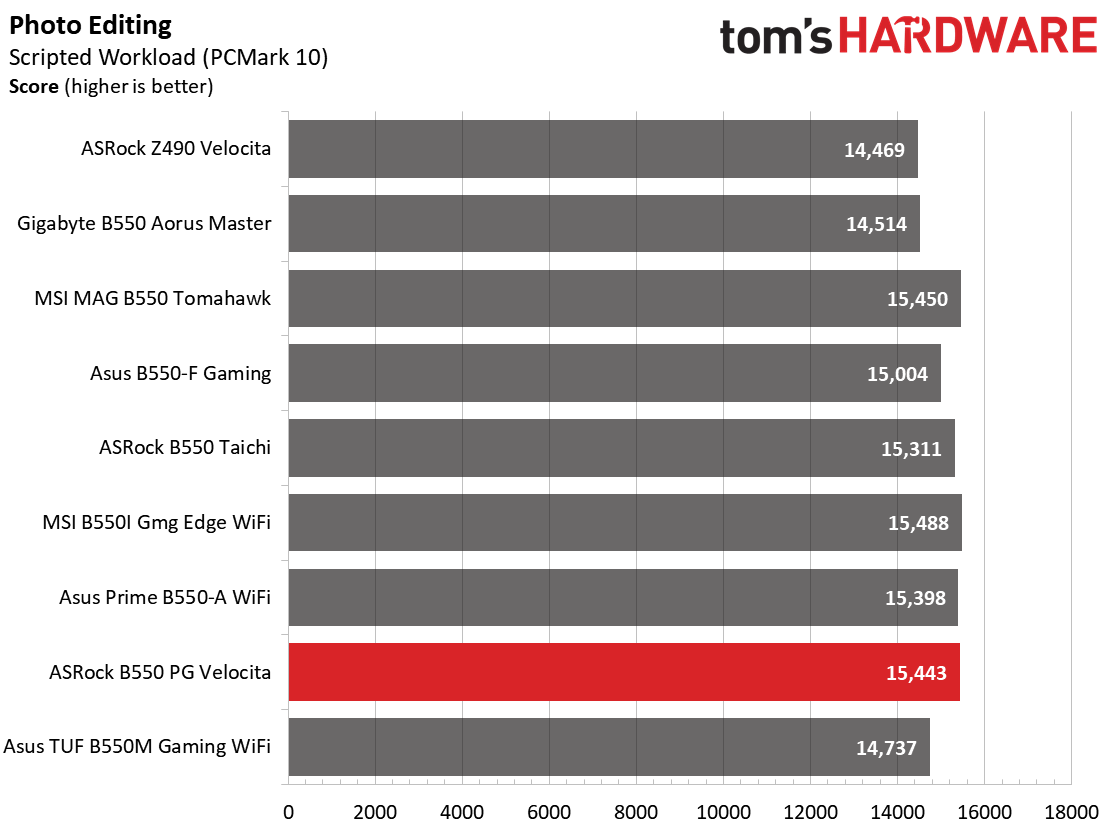
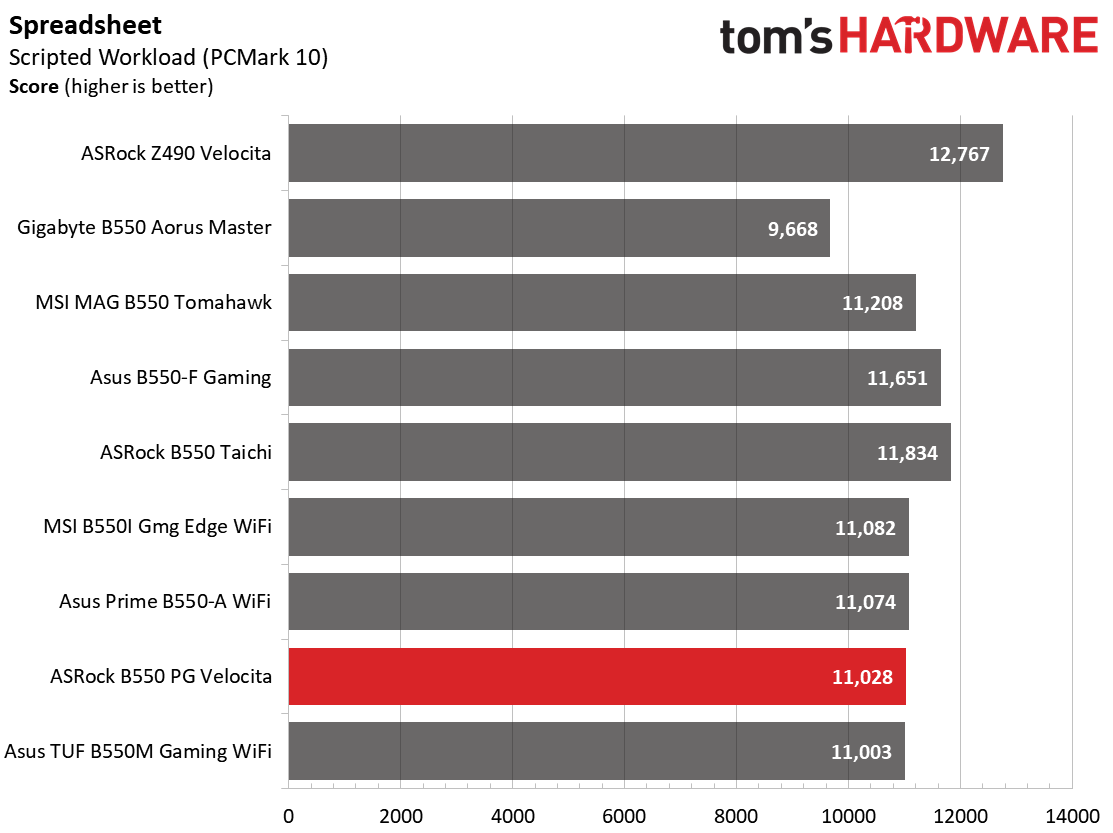
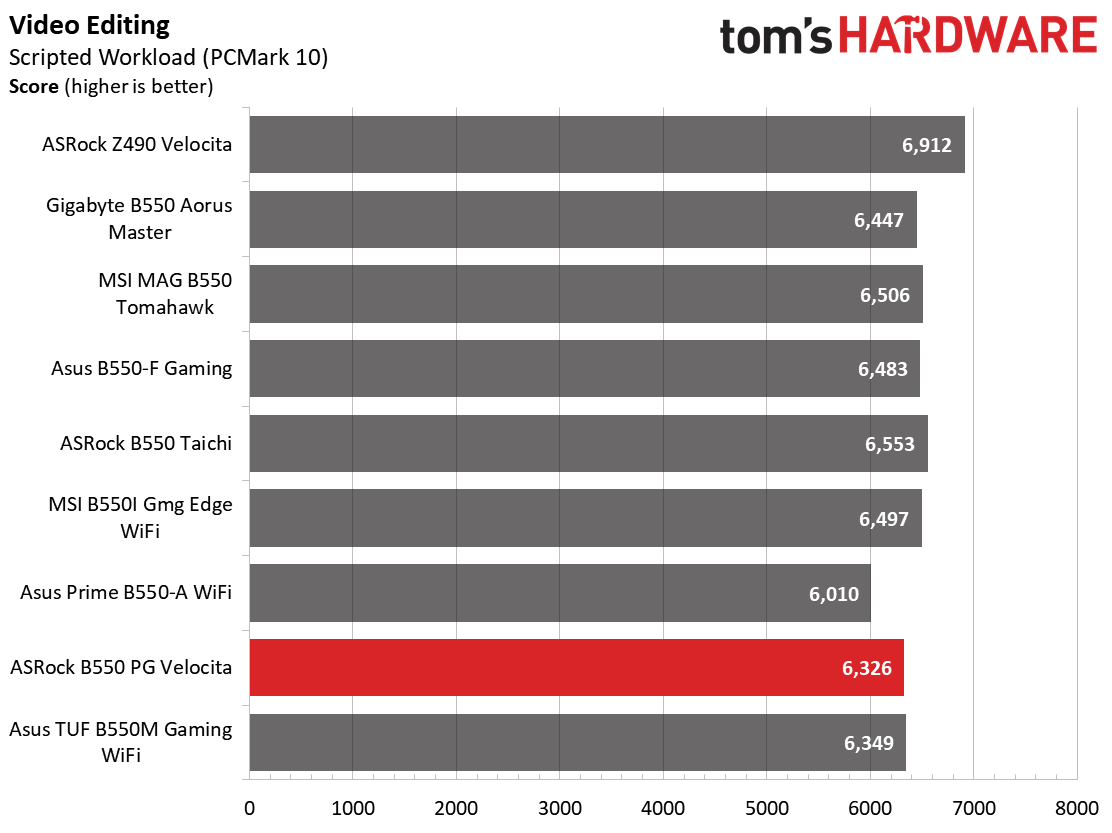

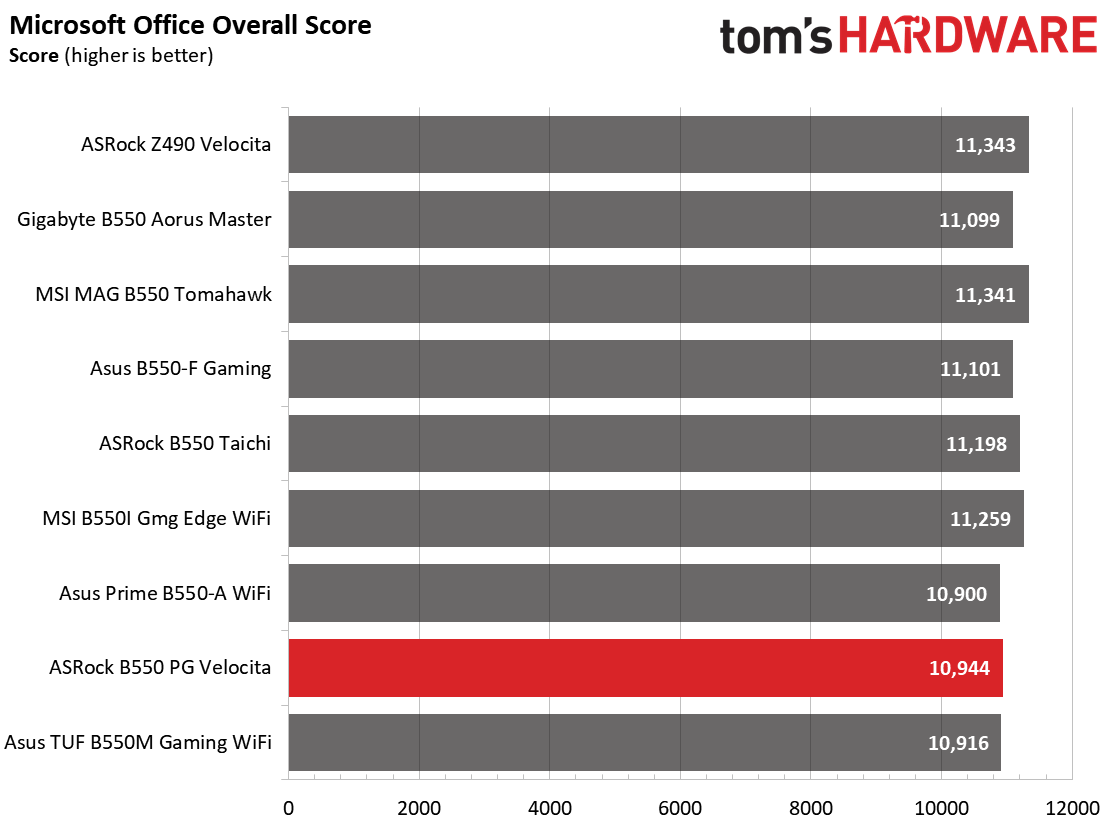
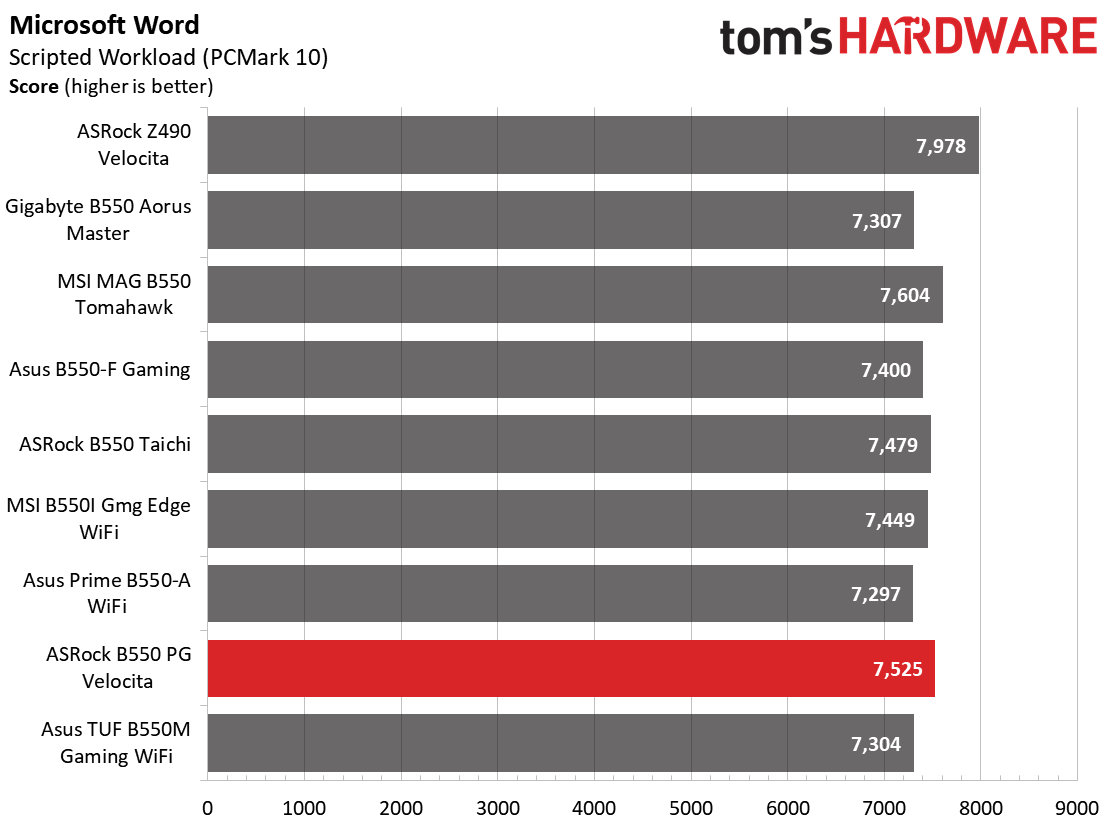

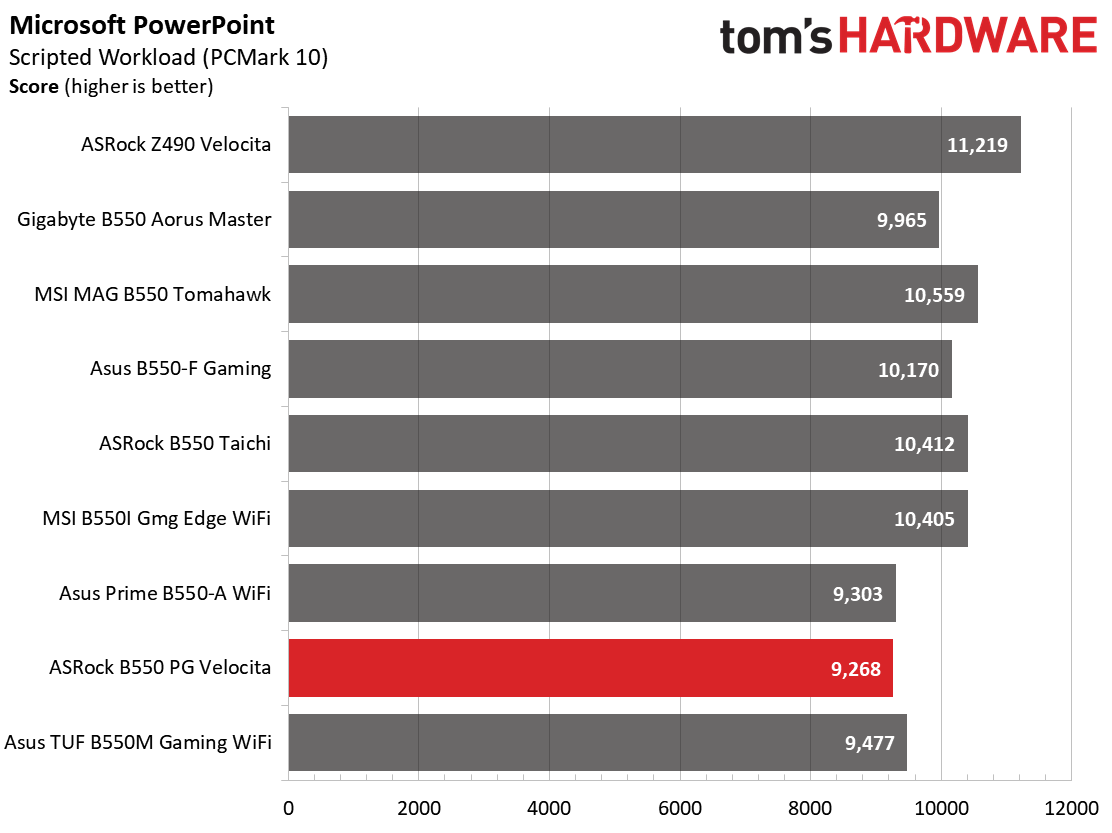
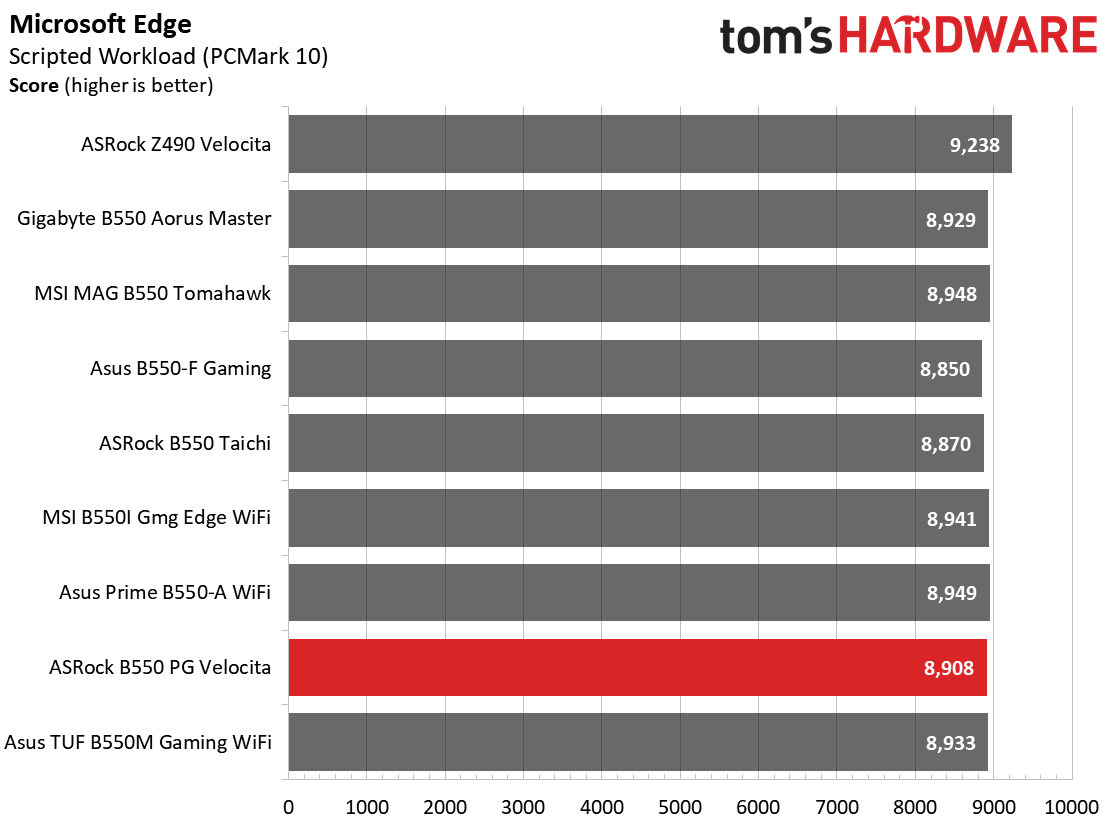
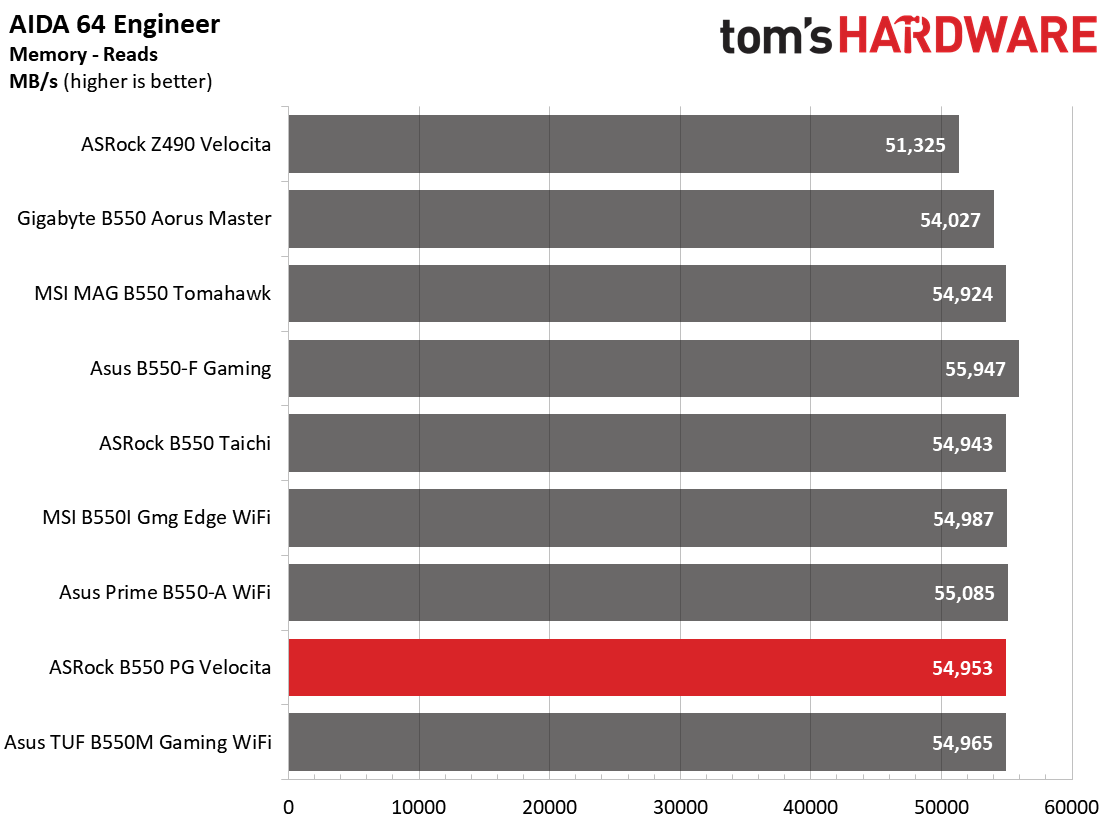

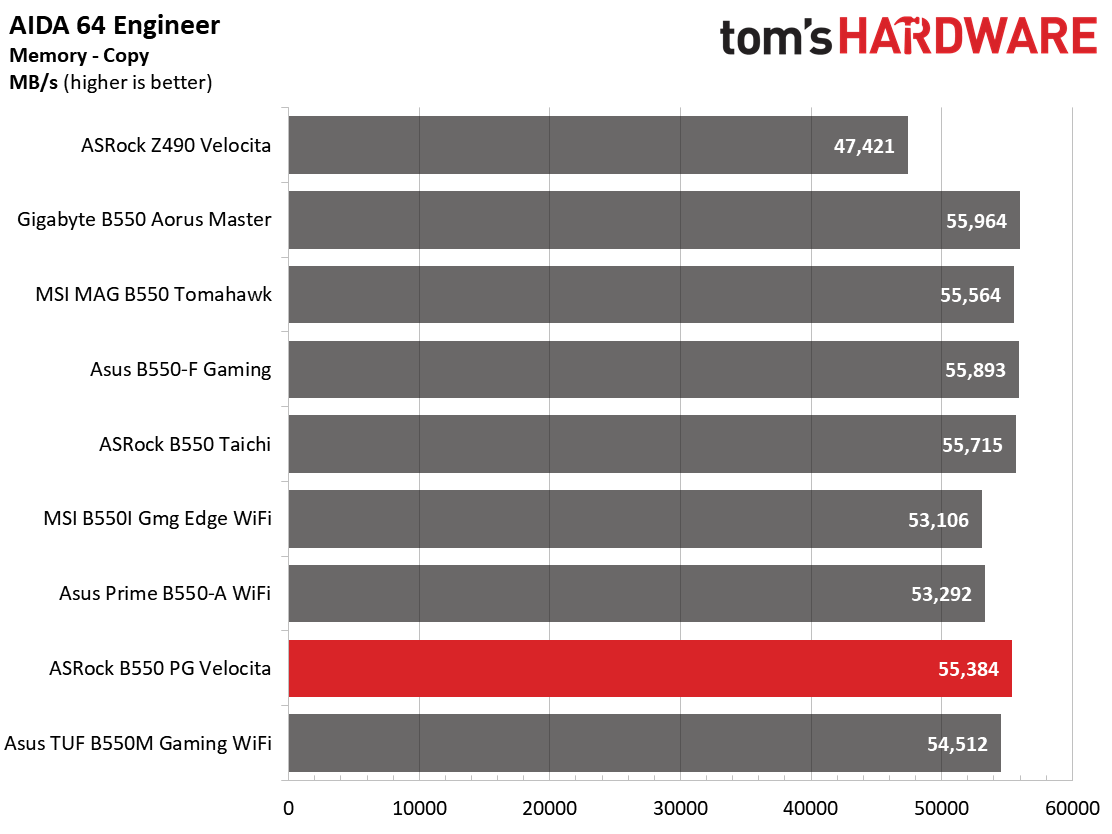

In our synthetic benchmarks, the B550 PG Velocita performed as expected in our synthetic benchmarks. There weren't any outstandingly positive or poor results that stuck out in our testing.
Timed Applications
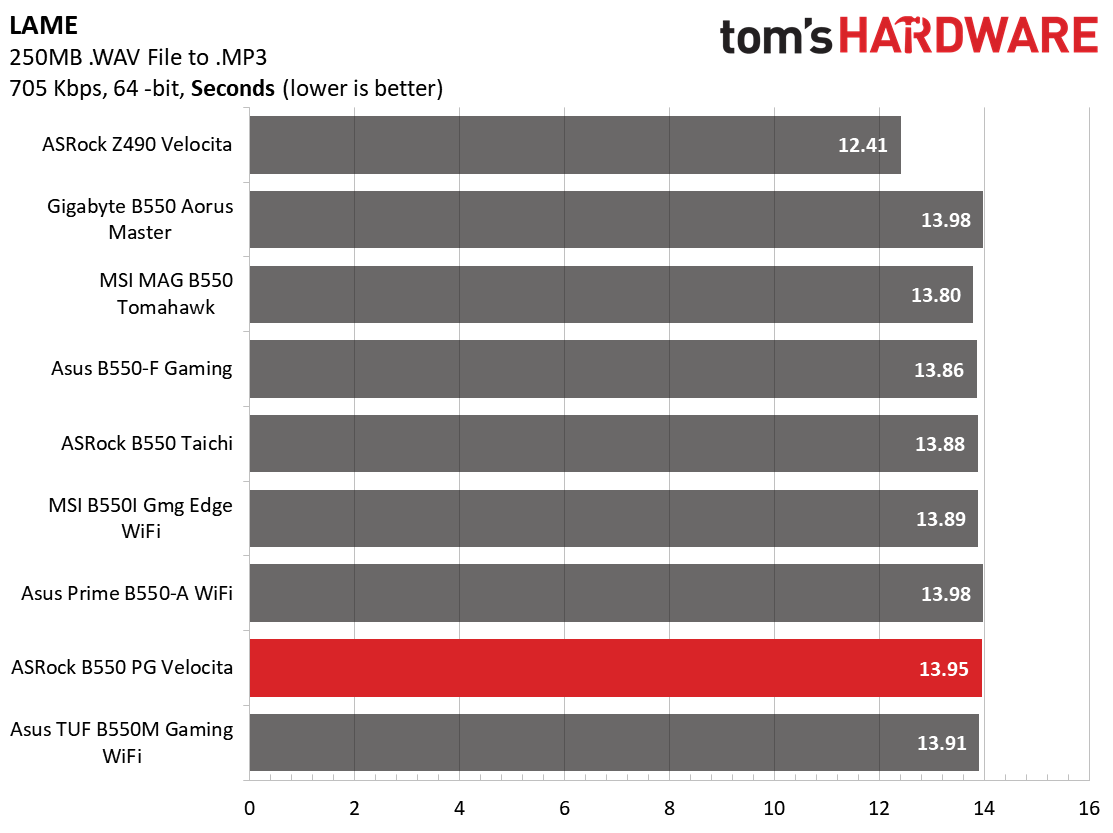
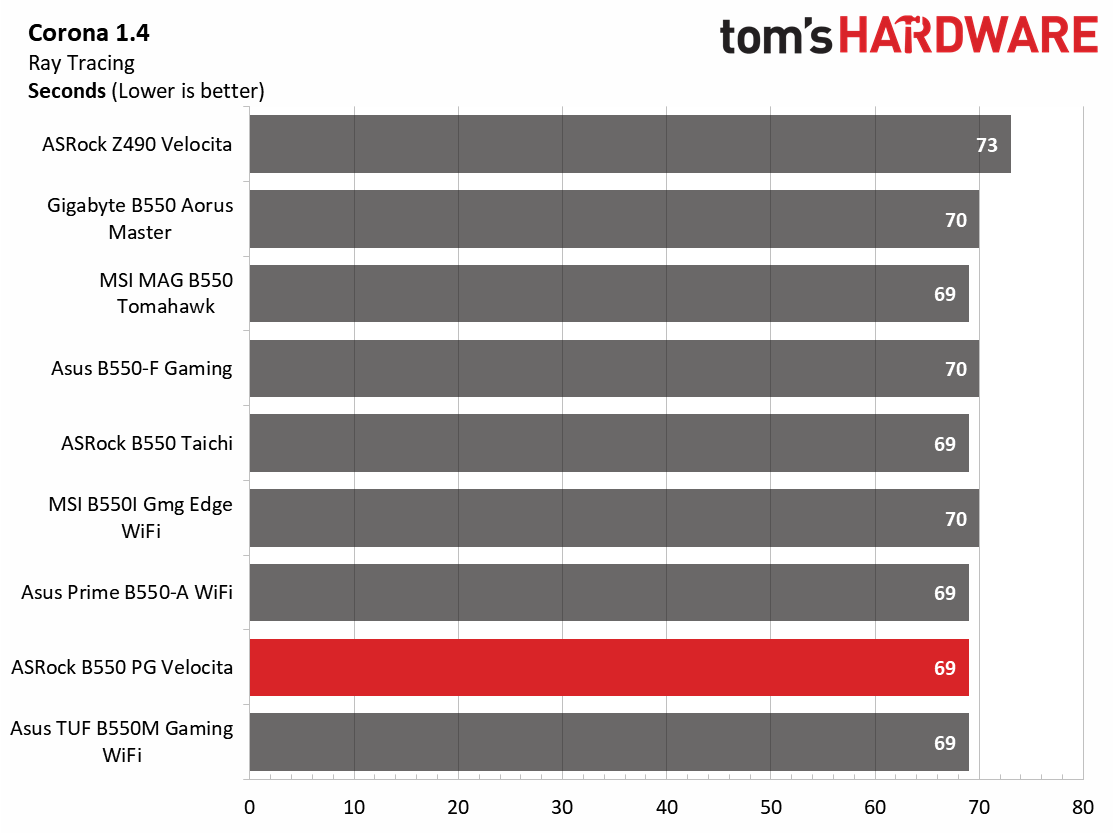

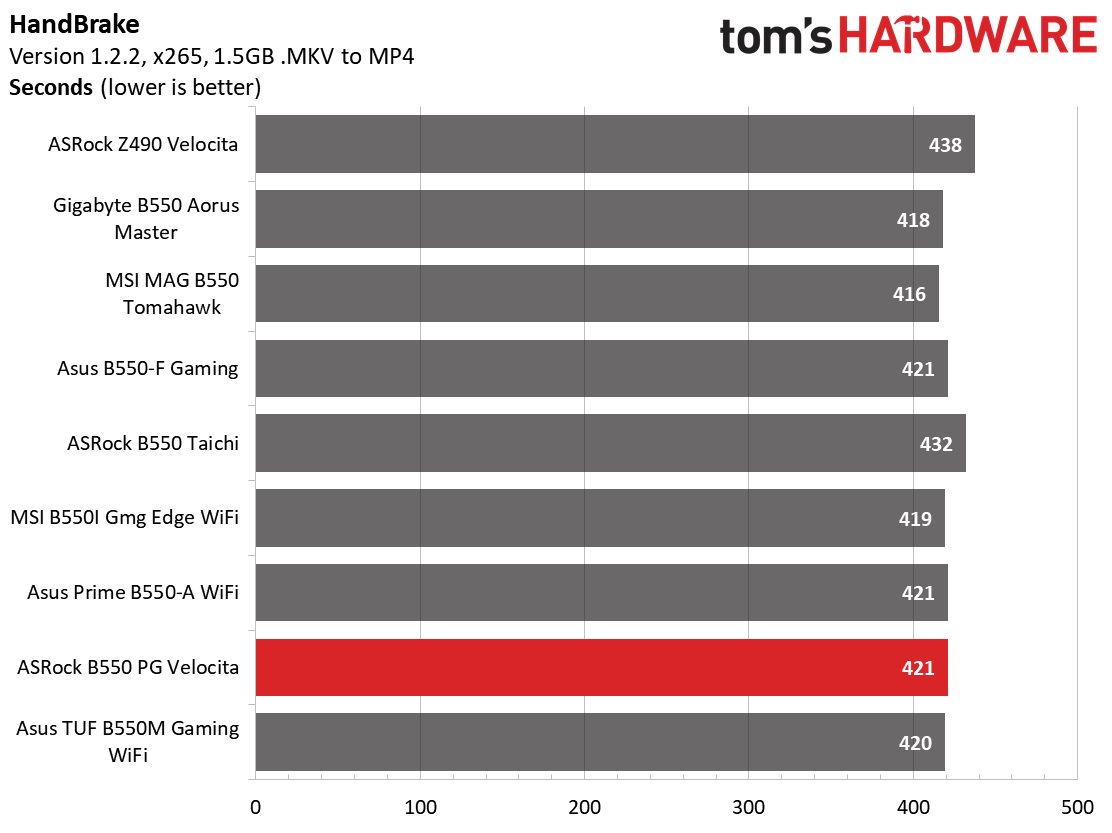
Our timed applications have the Velocita displaying results that match the other tested motherboards. Nothing to see here either!
3D Games and 3DMark

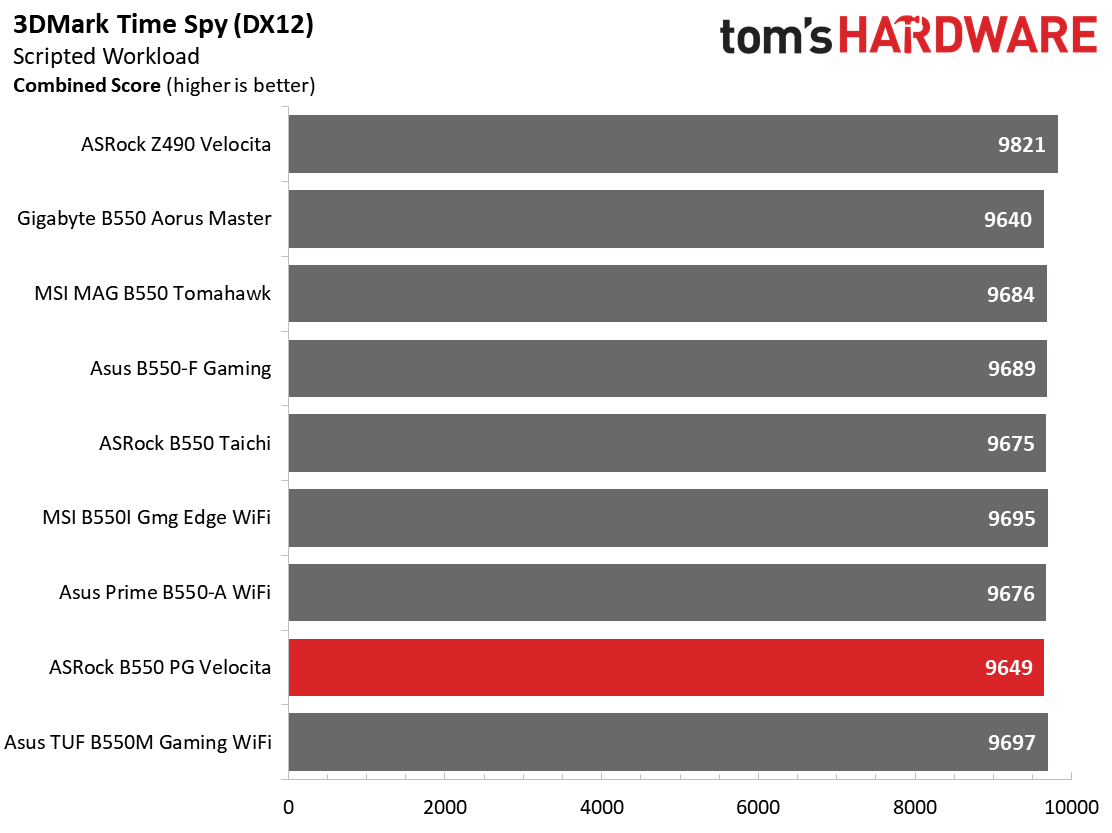

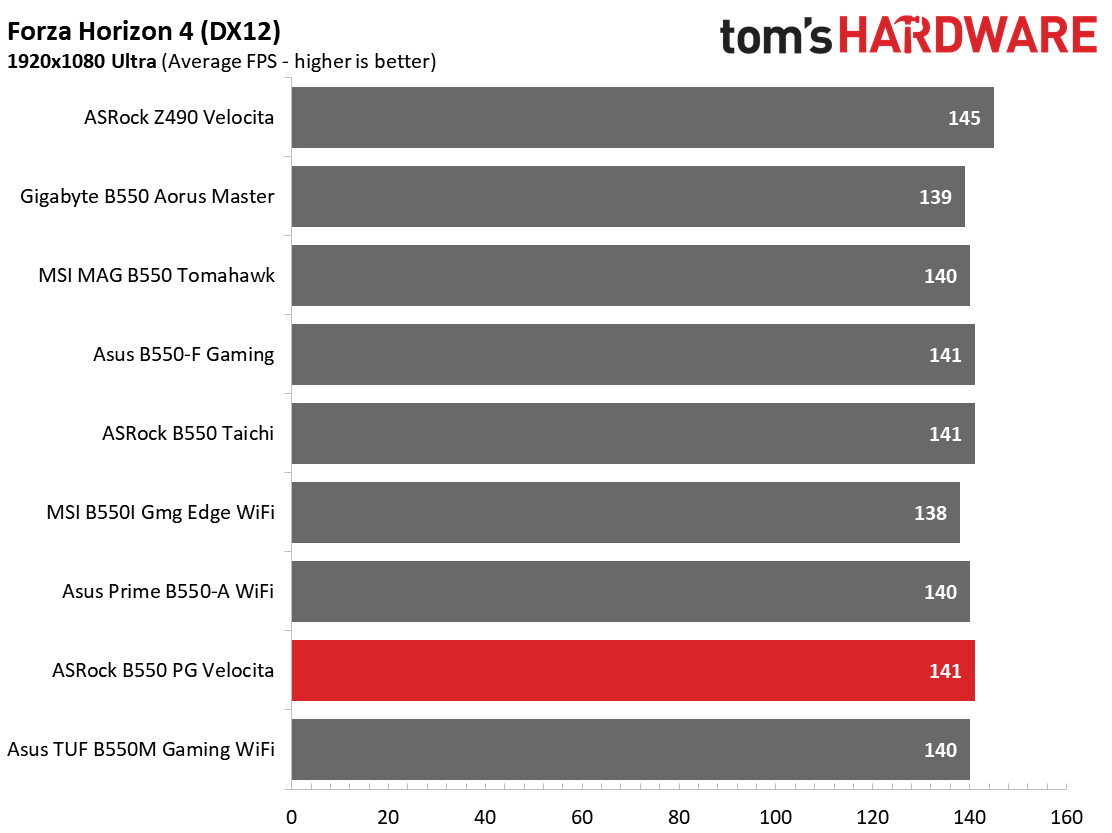
We’ve recently updated our game tests to The Division 2 and Forza Horizon 4. The games are run at 1920x1080 resolution using the Ultra preset. As the resolution goes up, the CPU tends to have less of an impact and most games at this resolution in the first place. The goal with these settings is to determine if there are differences in performance at the most commonly used resolution with settings most people use or at least strive for.
During our gaming and 3DMark tests, we again saw almost no difference between the motherboards. There’s nothing out of the ordinary here either.
Power Consumption and VRM Temperatures
For power testing, we used AIDA64’s System Stability Test with Stress CPU, FPU and Cache enabled, using the peak power consumption value. The wattage reading is taken from the wall via a Kill-A-Watt meter to capture the entire ecosystem. The only variable that changes is the motherboard; all other parts are the same.
Get Tom's Hardware's best news and in-depth reviews, straight to your inbox.
At idle, the B550 PG Velocita consumed 47 Watts from the wall which, is tied for the least amount of idle use. Load power use was also one of the lowest we’ve seen so far at 211W. If you average these values out, the B550 Velocita uses the least amount of power among all the B550 motherboards we’ve tested so far. That said, you’d be hard-pressed to notice the difference between most of these boards on your power bill.

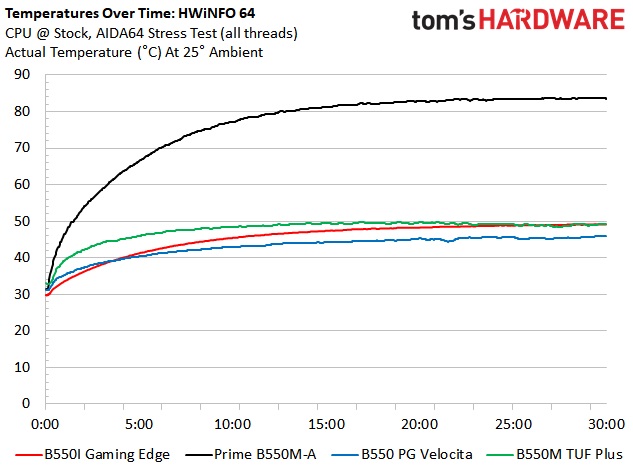
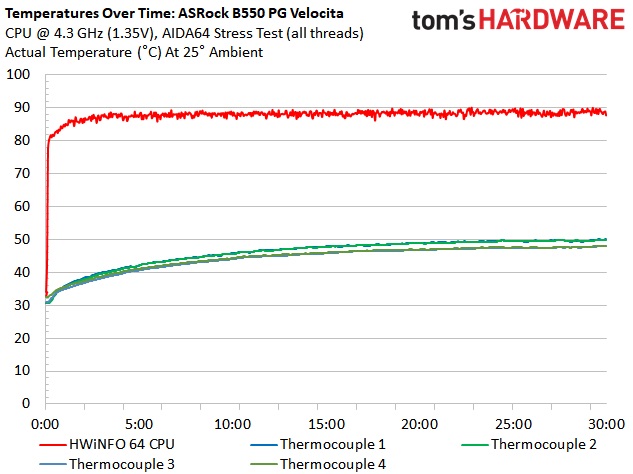
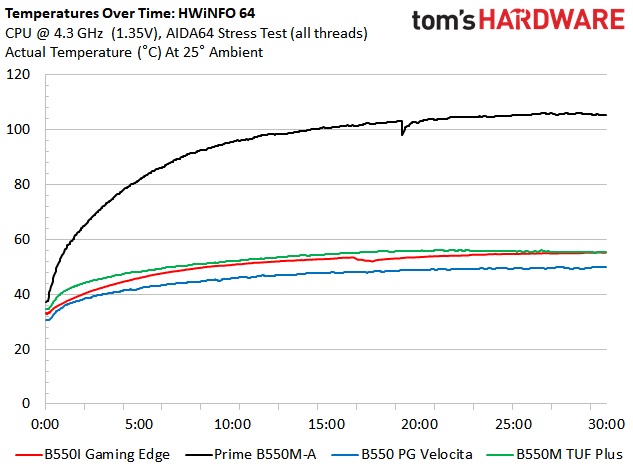
The Velocita’s 12-phase, 50A power bits for the CPU handled our testing without issue. During stock runs, the hottest point on the VRM was 46 degrees Celsius. HWinfo wasn’t able to read the sensor on this board, so that value was excluded in the charts. With our Ryzen 9 3900X overclocked to 4.3 GHz and 1.35V, VRM temps reached 50 degrees Celsius. These values are well within the MOSFETs’ operating parameters. The tiny fans on the heatsinks were inaudible at these speeds using default settings.
Overclocking
There are several ways to overclock on AMD platforms, depending on your goals. If your focus is single-threaded performance, you may want to focus on using Precision Boost Overdrive (PBO) and adjusting its parameters. If you can use all cores and threads, setting a manual CPU multiplier and voltage is likely the better route. While the latter clips peak single-threaded performance a bit, it increases all core/thread performance over the all-core boost. To that end, we use 4.3 GHz and 1.35V for an all core/thread overclock.
The PG Velocita handled our 12-core/24-thread Ryzen 9 3900X without issue. Vdroop was mitigated well with any LLC left on auto. For ambient overclocking, you have nothing to worry about.
On the memory side, we know AMD is limited to around 3600/3733 MHz when keeping FCLK at a 1:1 ratio with the memory. With this in mind, we add two more sticks and run 4x8GB at DDR4 3600, which is AMD’s current sweet spot. On this front, we did run into some issues. At first, we were unable to POST using the latest BIOS (1.10) and the XMP profile, nor with manual settings. After working with the team at ASRock, we received an updated BIOS that resolved the issues with the memory. After the update, we ran the full 4x8GB DDR4 3600 kit without issue as well.
Final Thoughts
ASRock’s Velocita line hit the ground running, especially on the Z490 version. With AMD’s B550 chipset, the board occupies a space between ASRock’s popular B550 Extreme 4 and the flagship B550 Taichi. The glaring omission on the Velocita is a lack of included Wi-Fi. Below the Taichi, the next ATX form factor board that comes with one is the Phantom Gaming 4/ac, at $125. Outside of that, you would need to go Mini ITX boards. This essentially forces you to pay a much higher price for the next SKU that has Wi-Fi, purchase a Wi-Fi module yourself (~$20 plus) or select a lower-end product, potentially losing other features in the process.
Priced at $219.99, the ASRock B550 PG Velocita goes head-to-head with the Asus ROG Strix B550-F Gaming ($209.99), Gigabyte Aorus Pro AC ($189.99), and the MSI MPG B550 Gaming Edge Wi-Fi ($189.99), each offering reasons to buy one over the other. Power delivery across all of these boards will support a 3900X, even when overclocked. The most significant difference between them is Wi-Fi. All boards other than the Velocita listed above come with it and they do so at a lower price. You can decide on which one looks the best.
All of these boards, including the MSI MAG B550 Tomahawk ($179.99) we reviewed, come with six SATA ports, Crossfire X capability and similar features. On the performance front, you’d be hard-pressed to find a tangible difference between any of the previously mentioned options. Between these similarly appointed motherboards, it will come down to looks, price, and in this case, Wi-Fi needs. In the end, the B550 PG Velocita is a solid motherboard and a good starting point to build a B550-based system around. But since Wi-Fi is missing, this Velocita would be a much better option if it was priced under $200.
MORE: Best Motherboards
MORE: How To Choose A Motherboard
MORE: All Motherboard Content

Joe Shields is a staff writer at Tom’s Hardware. He reviews motherboards and PC components.
-
RoLleRKoaSTeR Ok, so, this board does not have Wi-Fi. Who the fark cares. Too lazy to drop a LAN cable? Prefer to have any desktop (ATX) board to not even have Wi-Fi built in - the way it should be.Reply -
neojack ReplyRoLleRKoaSTeR said:Ok, so, this board does not have Wi-Fi. Who the fark cares. Too lazy to drop a LAN cable? Prefer to have any desktop (ATX) board to not even have Wi-Fi built in - the way it should be.
A wifi card gives wifi, but more importantly, it gives bluetooth. wich is needed vor VR controlers
moreover, most people don't have a structured network witch cables, plugs in the wall and switch in the basement (like I do), so wifi is a necessity for most people. -
Geezer760 Why not just give the consumer a choice, one with wifi, one without at a slightly lower price, done deal.Reply -
eTheBlack Reply
You have a choice. Buy wifi module seperate, there are connectors for it on motherboard.Geezer760 said:Why not just give the consumer a choice, one with wifi, one without at a slightly lower price, done deal.
